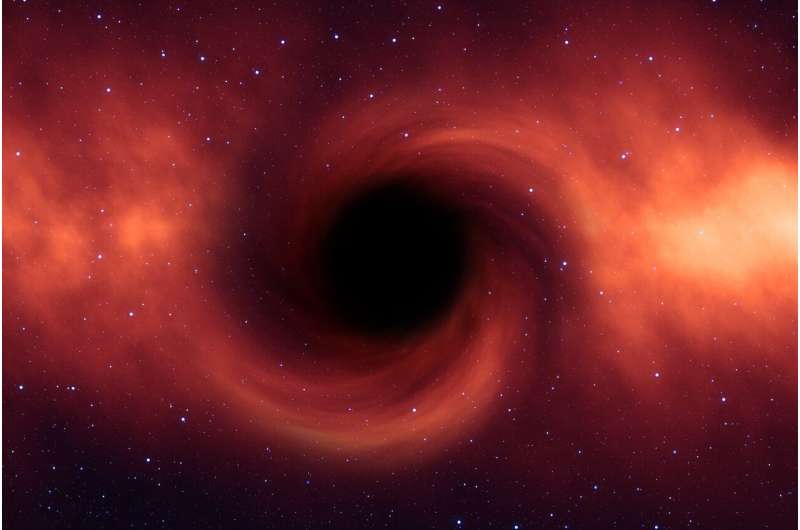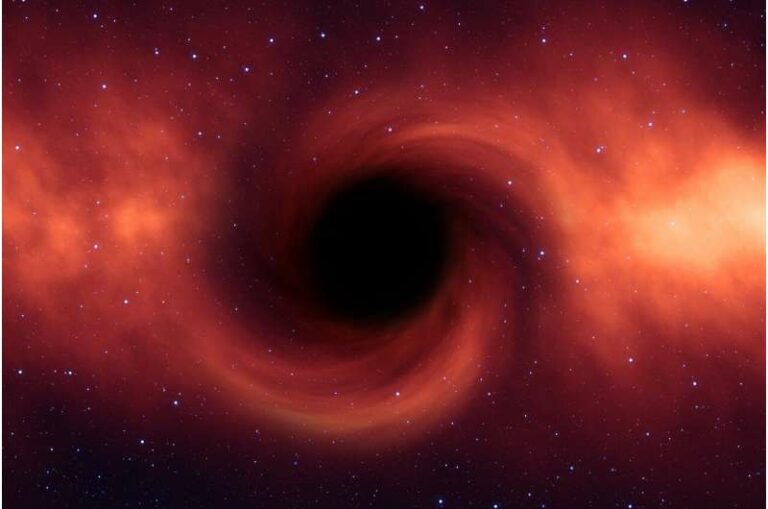‘Wobbling black hole’ most extreme example ever detected
An unusual event foreshadowed by Einstein’s theory of gravity has been discovered by Cardiff University researchers in the orbits of two merging black holes.
Professor Mark Hannam, Dr. Charlie Hoy, and Dr. Jonathan Thompson’s work, which was published in Nature, states that this is the first instance of the precession effect—where the twisting is 10 billion times quicker than in prior observations—being observed in black holes.

Early in 2020, the Advanced LIGO and Virgo detectors detected gravitational waves that led to the discovery of the binary black hole system. The fastest spinning black hole discovered by gravitational waves is probably one of the black holes, which is 40 times larger than the Sun. Additionally, in contrast to all prior findings, the quickly rotating black hole twisted space and time to the point that the binary’s whole orbit was in constant motion.
The general theory of relativity is the only one that can explain this kind of precession. The collision of two black holes, the most severe physical event we can see, provides evidence for its existence.
The Gravity Exploration Institute at Cardiff University’s Professor Mark Hannam stated, “We’ve long suspected that binary black holes can accomplish this. “Since the initial gravitational wave detections, we have been looking for an example. Over 80 different detections and five years later, we finally have one!”
The swaying of a spinning top, which may wobble—or precess—once every several seconds, is a more tangible illustration of precession. Precession in general relativity, however, typically has such a mild influence that it is undetectable. It took more than 75 years for the orbit to precess in the quickest example yet observed from binary pulsars, which orbit neutron stars. This study’s black-hole binary, also known as GW200129 (from the day it was discovered, January 29, 2020), precesses many times per second, a 10 billion-times-stronger effect than previously reported.
In his explanation, Cardiff University’s Dr. Jonathan Thompson said: “It’s difficult to pinpoint this impact. Because gravitational waves are so faint, it takes the most sensitive measurement tool yet to detect them. We have to conduct a meticulous investigation in order to find the precession since it is a much weaker impact that is concealed inside the already faint signal.”
Einstein made the gravitational wave prediction in 1916. They were first directly identified in 2015 by the Advanced LIGO sensors from the merging of two black holes, a ground-breaking discovery that earned them the 2017 Nobel Prize. With a network comprising the Advanced LIGO, Virgo, and KAGRA detectors functioning in the US, Europe, and Japan, gravitational wave astronomy is currently one of the most active disciplines of science. Over 80 detections of merging neutron stars or black holes have been made thus far.
Dr. Charlie Hoy, a researcher at Cardiff University during this investigation and currently at the University of Portsmouth, stated that “so far most black holes we’ve observed using gravitational waves have been spinning rather slowly.” “About 40 times as big as the Sun, the largest black hole in this binary was spinning almost as quickly as it was physically conceivable. A one in a thousand event, according to our existing understanding of how binaries develop, is how unusual this particular occurrence was. Or it can be an indication that we need to update our models.”
The next universe-wide scan for gravitational waves will begin in 2023 after an update to the global network of gravitational-wave detectors. It will be clear from the discovery of hundreds more black holes colliding whether GW200129 was an exceptional case or an indication that the cosmos is more bizarre than previously assumed.
Source:PhysOrG
Do not forget to share your opinion with us to provide you with the best posts !




0 Comments